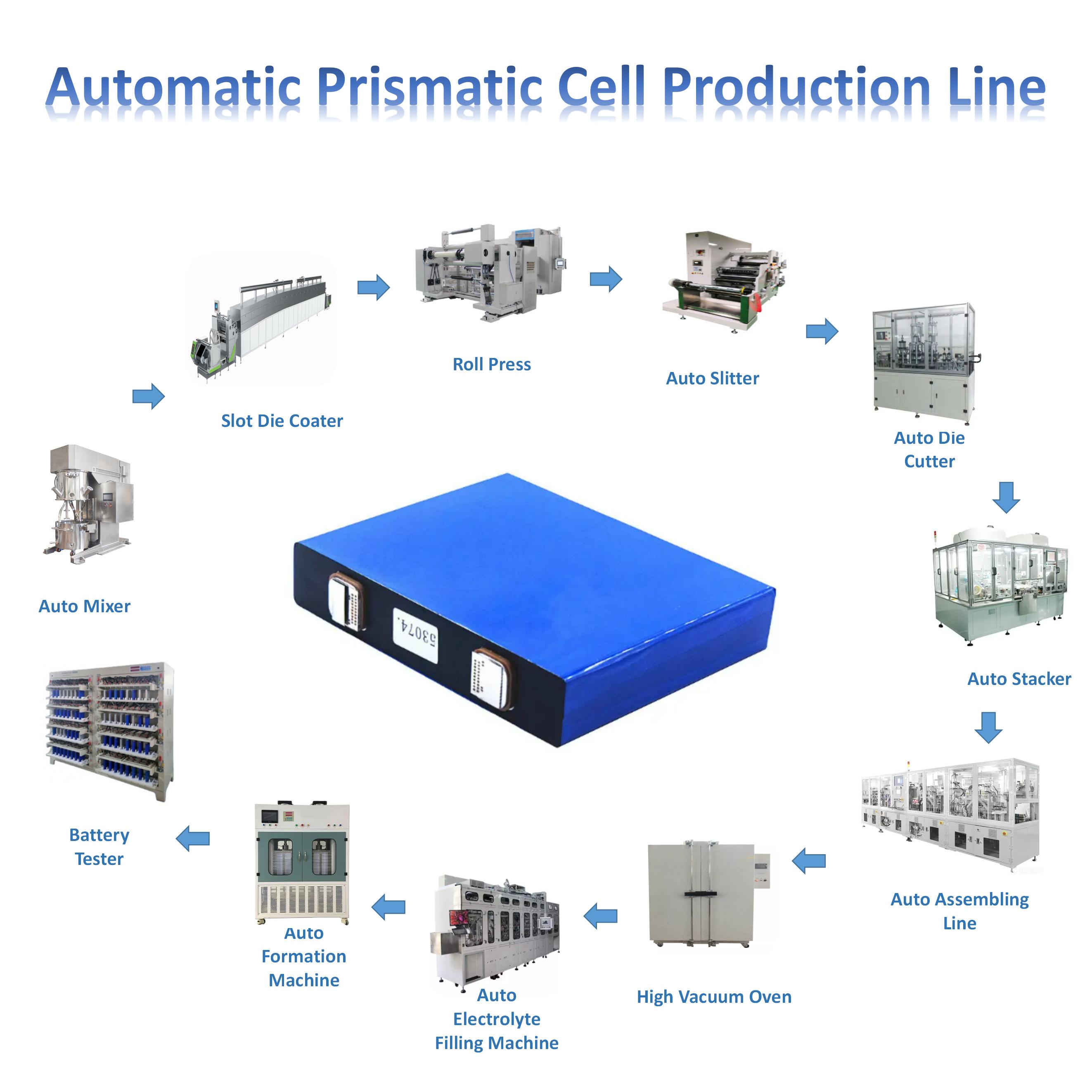- Battery Manufacturing Equipment
- Battery Laboratory Assembly Equipment
- Battery Pack Assembly Equipment
- Sodium Ion Battery Manufacturing Equipment
- Solid State Battery Assembly Line
- Dry Electrode Assembly Equipment
- Supercapacitor Assembly Equipment
- Perovskite Solar Cell Lab Equipment
- Li ion Battery Materials
- Ni / Al / Cu Metal Foam
- Customized Electrode
- Cathode Active Materials
- Anode Active Materials
- Coin Cell Parts
- Lithium Chip
- Cylindrical Cell Parts
- Battery Current Collectors
- Battery Conductive Materials
- Electrolyte
- Battery Binder
- Separator and Tape
- Aluminum Laminate Film
- Nickel Strip/Foil
- Battery Tabs
- Graphene Materials
- Cu / Al / Ni / Stainless steel Foil
- Battery Laboratory Equipment
- Li ion Battery Tester
- Battery Safety Tester
- Battery Material Tester
- Film Coating Machine
- Rolling Press Machine
- Electrode Mixer
- Coin Cell Crimping Machine
- Coin Cell Electrode Disc Punching
- Pouch Cell Sealing Machine
- Pouch Cell Stacking Machine
- Pouch Cell Forming Machine
- Pouch Cell Ultrasonic Welder
- Pouch Cell Electrode Die Cutter
- Cylinder Cell Sealing Machine
- Cylinder Cell Grooving Machine
- Electrode Slitting Machine
- Cylinder Cell Winding Machine
- Cylinder Cell Spot Welding Machine
- Electrolyte Filling
- Type Test Cell
- Other Battery Making Machine
- NMP Solvent Treatment System
- Vacuum Glove Box
- Lab Furnaces
- Ball Mill
- Hydraulic Press
- Laboratory Equipment
- 2023-07-14
Planning and constructing a prismatic cell fabrication plant requires careful consideration of multiple factors to ensure an efficient and successful operation. Here is a detailed guide for planning and building a prismatic cell pilot line:
Production Capacity:
a. Determine the target production capacity based on market demand, sales projections, and business goals.
b. Consider factors such as available resources, market growth potential, and scalability of the plant.
c. Conduct a thorough feasibility study to assess the economic viability and potential return on investment.
Equipment Selection:
a. Research and select equipment from reputable suppliers that specialize in prismatic cell manufacturing.
b. Consider the specific requirements of the prismatic cell design, production volume, and desired automation level.
c. Choose equipment that offers high efficiency, accuracy, reliability, and flexibility to meet production demands.
d. Key equipment may include electrode coating machines, stacking machines, tab welding machines, lamination machines, electrolyte filling equipment, and testing instruments.
Process Flow:
a. Develop a detailed process flowchart that outlines the sequential steps involved in prismatic cell fabrication.
b. Ensure smooth integration and synchronization of the different stages, including electrode preparation, cell assembly, encapsulation, formation, and testing.
c. Optimize the process flow to minimize material handling, streamline production, and maximize efficiency.
d. Consider implementing process automation and control systems to enhance accuracy and repeatability.
Factory Layout:
a. Design an efficient and ergonomic factory layout that facilitates smooth material flow and minimizes production bottlenecks.
b. Allocate space for different production areas, such as raw material storage, electrode preparation, cell assembly, quality control, packaging, and storage.
c. Ensure proper spacing between workstations, machinery, and safety equipment to comply with safety regulations and facilitate smooth operations.
d. Consider future expansion and scalability when planning the factory layout.
Quality Control and Testing:
a. Establish a comprehensive quality control system to ensure consistent product quality and meet industry standards.
b. Implement rigorous quality control procedures at each stage of the manufacturing process, including incoming materials inspection, in-process quality checks, and final product testing.
c. Use advanced testing and measurement equipment for performance evaluation, electrical testing, capacity testing, and safety assessments.
d. Train staff on quality control protocols and establish a culture of quality consciousness.
Safety and Environmental Considerations:
a. Comply with local safety regulations and implement robust safety protocols to ensure a safe working environment.
b. Conduct regular safety inspections, provide necessary protective equipment, and train employees on safe operating procedures.
c. Implement environmentally friendly practices, such as energy-efficient equipment, waste management systems, and recycling programs to minimize environmental impact.
Workforce and Training:
a. Determine the required workforce based on the production capacity and complexity of the manufacturing process.
b. Hire skilled personnel with relevant experience in prismatic cell lab sacle plant or provide comprehensive training programs to develop the required skills.
c. Foster a culture of continuous learning and improvement through ongoing training and knowledge sharing initiatives.
d. Encourage employee involvement and engagement to enhance productivity and maintain a positive work environment.
Regulatory Compliance:
a. Stay up-to-date with applicable regulations and standards related to battery manufacturing, product safety, and environmental regulations.
b. Ensure compliance with safety, health, and environmental regulations to protect workers, consumers, and the environment.
c. Establish protocols for documentation, record-keeping, and reporting to demonstrate compliance with regulatory requirements.
Collaboration and Partnerships:
a. Collaborate with research institutions, universities, and industry experts to stay updated on the latest advancements in prismatic cell technology.
b. Explore partnerships with material suppliers, equipment manufacturers, and testing laboratories to ensure access to high-quality materials, advanced equipment, and reliable testing services.
By following these detailed recommendations, a prismatic cell fabrication plant can be efficiently planned and constructed, leading to successful production of high-quality prismatic cells that meet market demands and contribute to the advancement of energy storage technology.
-
 Automatic Cylinderical Battery Electrode Winding Machine
Read More
Automatic Cylinderical Battery Electrode Winding Machine
Read More
-
 100-200L Double Planetary Vacuum Mixing Machine for Lithium Battery Slurry
Read More
100-200L Double Planetary Vacuum Mixing Machine for Lithium Battery Slurry
Read More
-
 Large Heating Roller Press Machine Calender For Li ion Battery Production Line
Read More
Large Heating Roller Press Machine Calender For Li ion Battery Production Line
Read More
-
 Large 3 Rollers Battery Electrode Film Intermittent Coating Machine for Pilot Production Line
Read More
Large 3 Rollers Battery Electrode Film Intermittent Coating Machine for Pilot Production Line
Read More
-
 512 Channel 5V3A Battery Grading Machine/Battery Charge Discharge Machine Tester
Read More
512 Channel 5V3A Battery Grading Machine/Battery Charge Discharge Machine Tester
Read More
 ru
ru


 cindy@tmaxcn.com
cindy@tmaxcn.com David@battery-equipments.com
David@battery-equipments.com Wechat:13506084915
Wechat:13506084915